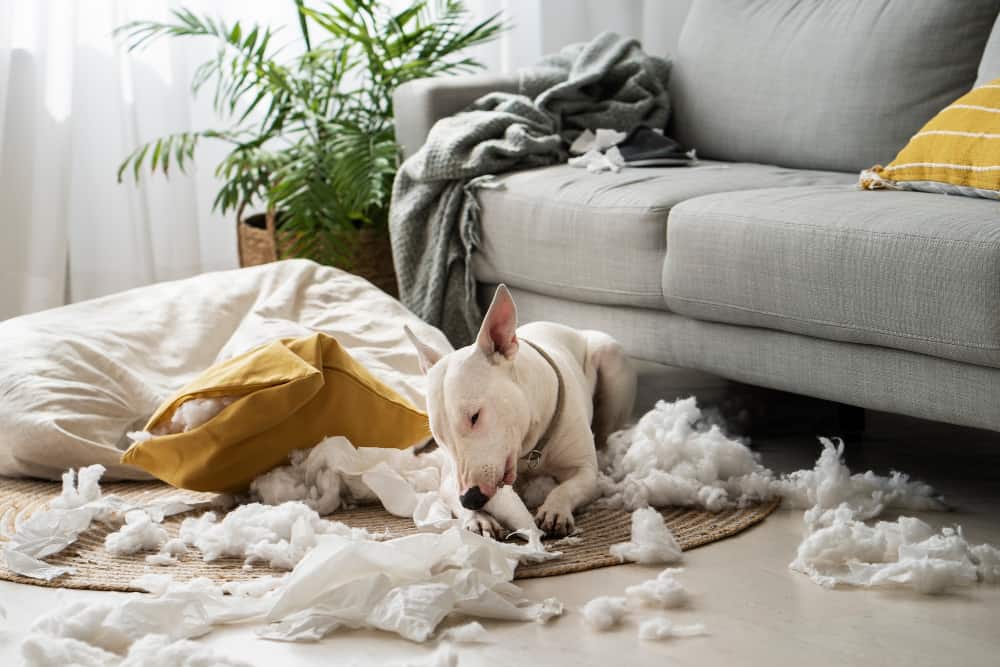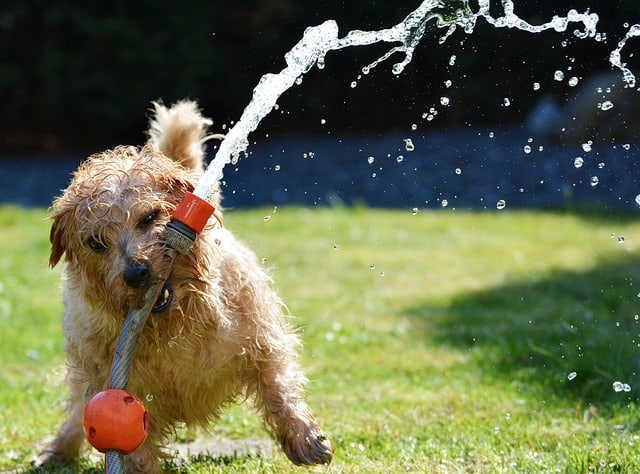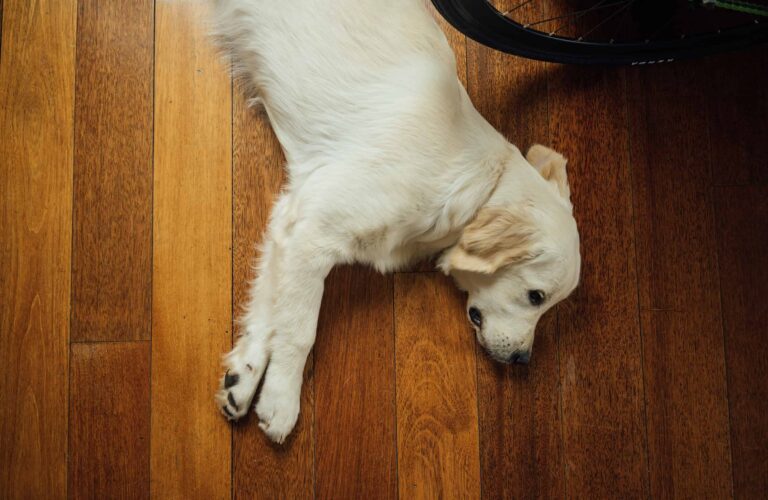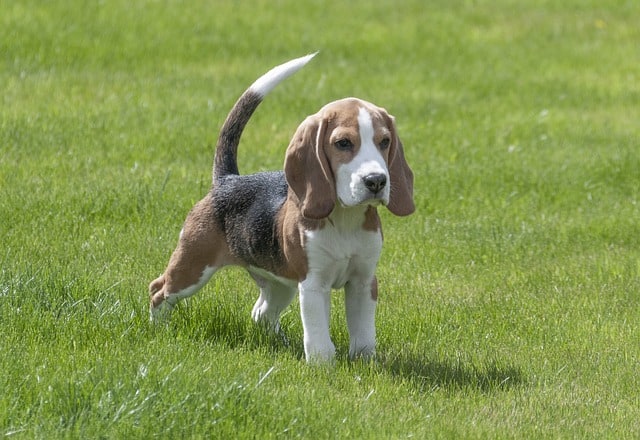The Ultimate Guide How To Train Dog With Separation Anxiety

If you’re a dog owner, you know that separation anxiety can be a real challenge. Coming home to find that your beloved furry friend has destroyed your favorite pair of shoes or left a mess on the carpet is frustrating and heartbreaking. However, just like humans, dogs can also experience emotions such as jealousy and separation anxiety.
In this blog post, we’ll explore some effective techniques and tips on how to train dog with separation anxiety. So grab some treats and get ready to take the first step towards a happier, calmer pup.
Contents
- What are some common signs of separation anxiety in dogs
- How to train dog with separation anxiety
- Gradual Desensitization
- Create a Safe Space
- Establish a Routine
- Leave and Return Without Fanfare
- Use Interactive Toys
- Counterconditioning
- Use Calming Products
- Seek Professional Help
- Medication
- How long does it take to train a dog with separation anxiety?
- How to train an old dog with separation anxiety?
- How do you train puppies with separation anxiety?
- Can separation anxiety in dogs be cured?
- Can Separation Anxiety Always Be Prevented?
- Conclusion
What are some common signs of separation anxiety in dogs
The development of separation anxiety in dogs can manifest itself in various ways. Here are some common signs to look out for:

1. Excessive barking or howling when left alone: If your dog becomes vocal as soon as you leave the house, this could be a sign of separation anxiety. Their distress may lead them to bark or howl to seek attention or express discomfort.
2. Destructive behavior: Dogs with separation anxiety often resort to destructive behaviors, such as chewing furniture, shoes, or other household items. This is their way of coping with the stress and trying to alleviate their anxiety.
3. Pacing or restlessness: Another sign of separation anxiety is when your dog becomes restless, constantly pacing around the house, or unable to settle down. They may seem unable to relax or find comfort without your presence.
4. House soiling: Dogs with separation anxiety may have accidents inside the house, even if they are already house-trained. This can be a result of their distress and inability to control their bladder or bowels when left alone.
5. Excessive drooling or panting: When dogs feel anxious, they may exhibit physical symptoms such as excessive or panting. These symptoms can be a clear indication of their anxiety levels and should not be ignored.
6. Attempts to escape: Dogs with separation anxiety may go to great lengths to try and escape from their environment when left alone. They may scratch at doors and windows or even dig under fences to find you or alleviate their distress.
7. Loss of appetite: Many dogs experience an interest in food or refuse to eat. This loss of appetite is often a result of the stress and emotional turmoil they feel when separated from their owner.
It’s important to note that these signs of jealousy in dogs can often overlap with signs of separation anxiety. Jealousy is a complex emotion for dogs, manifesting itself in various ways. While some dogs may display more obvious signs of jealousy, such as growling or snapping when attention is given to another pet or person, others may exhibit subtler behaviors.
Read More: – Signs My Dog get Jealous of New Puppy: Unveiling the Truth
How to train dog with separation anxiety
Training a dog with separation anxiety can be challenging, but patience and consistency can help them overcome their distress. Here are some tips for training a dog with separation anxiety:

Gradual Desensitization
To identify if your dog is experiencing separation anxiety, look out for common signs such as persistent barking, destructive behavior, and attempts to escape confinement. Gradual desensitization is a key technique used in treating separation anxiety in dogs. Here’s how it works:
- Start by leaving your dog alone for short periods, gradually increasing the duration.
- Provide your dog with a crate or a safe, confined space during these periods of being alone.
- Use positive reinforcement techniques, such as giving treats or toys, to create positive associations with being alone.
- Start by teaching your dog to stay in another room while you leave, then work up to leaving the house.
Create a Safe Space
Dogs with separation anxiety may exhibit excessive barking or howling when left alone, which can be disruptive and distressing for the dog and their guardians. They may also engage in destructive behavior, such as chewing or digging, as a way to cope with their anxiety. Another common sign is attempting to escape from confinement, such as scratching at doors or windows.
Recognizing these signs is crucial in developing a training plan to help your dog with separation anxiety. One effective strategy is crate training, which can provide a safe space for your dog and help them feel more secure when left alone. By creating a safe and comfortable environment, you can alleviate their anxiety and promote positive behavior.
Establish a Routine
To establish a routine and effectively address separation anxiety in dogs, it’s important to recognize the common signs of this condition. Here are three signs to watch for:
- Urinating and defecating when left alone or separated from guardians: This can be a clear indication of anxiety and distress in a dog.
- Persistent barking or howling when left alone: Excessive vocalization is often a result of separation anxiety and can be disruptive for both the dog and the neighbors.
- Chewing, digging, and destruction of objects when left alone: Dogs with separation anxiety may engage in destructive behavior as a way to cope with their anxiety.
Leave and Return Without Fanfare
when you return home, they may continue to bark or howl due to their excitement and relief at your presence. To help manage separation anxiety, leaving your dog and returning without fanfare is important. This means avoiding excessive greetings or attention when you leave or come back.
Instead, keep your interactions calm and low-key, allowing your dog to settle down before engaging with them. This approach helps to normalize departures and arrivals, reducing your dog’s anxiety and reinforcing a sense of security.
Read More: – The Fascination: Why Do Dogs Like Looking Out the Window
Use Interactive Toys
When managing separation anxiety in dogs, incorporating interactive toys into their routine is an effective approach. These toys can help keep your dog engaged and mentally stimulated, reducing their anxiety when left alone.
Here are three ways interactive toys can help your dog during separation anxiety training:
- Provide a distraction: Interactive toys, such as puzzle toys, can keep your dog occupied and focused on a task. This can help redirect their attention away from their anxiety and provide a healthy outlet for their energy.
- Promote independence: By encouraging your dog to play with interactive toys independently, you’re helping them develop a sense of independence. This can boost their confidence and reduce their reliance on constant human presence.
- Create positive associations: Using interactive toys during your dog’s alone time can create positive associations with being alone. When they associate being alone with fun and rewarding activities, it can help alleviate their anxiety and make the experience more enjoyable.
Counterconditioning
Counterconditioning can also be an effective technique for training dogs with separation anxiety. This involves pairing the presence of a feared or stressful stimulus, such as being left alone, with something that elicits positive emotions in the dog. For example, you can give your dog a special treat or toy whenever you leave, creating a positive association with your departure.
Use Calming Products
To help alleviate the symptoms of separation anxiety in dogs, consider using calming products such as pheromone diffusers or anxiety wraps. These products can effectively reduce anxiety and create a sense of calm for your furry friend.
Separation anxiety in dogs can manifest through various symptoms, including urinating and defecating when left alone, persistent barking or howling, destructive behavior, and attempting to escape confinement.
While behavior modification and a comprehensive training plan are crucial in addressing separation anxiety, using calming products can provide additional support. Pheromone diffusers release synthetic pheromones that mimic the ones a mother dog produces to comfort her puppies. Anxiety wraps, on the other hand, apply gentle pressure to the dog’s body, which can have a calming effect.
Incorporating these calming products into your training plan can help your dog feel more secure and reduce their anxiety during periods of separation.
Seek Professional Help
If you notice any common signs of separation anxiety in your dog, it may be time to seek professional help. Separation anxiety in dogs can be a challenging issue to tackle on your own, and a professional dog trainer or behaviorist can provide the expertise and guidance needed to help your dog overcome their anxiety.
A professional dog trainer can assess your dog’s behavior, develop a personalized training plan, and teach you effective techniques to address separation anxiety. With their assistance, you can help your dog feel more comfortable and secure when alone.
Medication
While medication can be a helpful tool in managing separation anxiety, it’s important to remember that it should be used as part of a comprehensive treatment program that includes behavior modification techniques and training. Consult with a professional veterinarian to determine the most appropriate medication and dosage for your dog, and to ensure that it’s used in conjunction with a training program tailored to their specific needs.
Read More:- How to Deal with a Dog Jealous of Other Dogs: Expert Tips
How long does it take to train a dog with separation anxiety?
Training a dog with separation anxiety can take varying amounts of time, depending on the severity of the anxiety and the consistency of the training. It is important to remember that every dog is different, and there is no fixed timeline for treating separation anxiety. However, with proper training techniques and dedication, you can help your dog overcome anxiety and become more comfortable when left alone.
| Training Session | Duration |
|---|---|
| Mild Separation Anxiety Treatment | A few weeks of counterconditioning with food-stuffed puzzle toys |
| Moderate to Severe Separation Anxiety Treatment | A desensitization and counterconditioning program with professional guidance |
| Gradually increasing the duration of departures. | Conducting several daily sessions over a few weeks, increasing departure duration by a few seconds each session |
Consistency is key when training a dog with separation anxiety. Conducting regular training sessions and gradually increasing the duration of departures over time is recommended. Seeking professional help can accelerate the training process and ensure effective treatment. Remember to be patient with your furry friend and celebrate small victories.

How to train an old dog with separation anxiety?
To crate train an older dog with separation anxiety, start by gradually introducing them to the crate using positive reinforcement techniques. Here’s how you can do it:
- Create a positive association: Make the crate a comfortable and inviting by placing their favorite blanket or toy inside. Use treats and praise to reward them for exploring and entering the crate.
- Gradually increase crate time: Start by leaving the dog in the crate for short periods while you’re still at home. Gradually extend the duration as they become more comfortable and relaxed.
- Practice crate training during departures: Once the dog is comfortable spending time in the crate, start incorporating it into your departure routine. Begin with short departures and gradually increase the time you’re away.
How do you train puppies with separation anxiety?
Training puppies scared of being alone requires patience, consistency, and positive reinforcement. Here are some tips to help you train your puppy:
1. Start with short periods of separation: Begin by leaving your puppy alone for just a few minutes and gradually increase the duration over time. This will help them become accustomed to being alone without feeling overwhelmed.
2. Create a safe and comfortable space: Set up a designated area where your puppy can feel secure when left alone. Provide soft bedding, toys, and maybe even a piece of clothing with your scent to create a calming environment.
3. Use positive reinforcement: Reward your puppy for calm behavior when you leave and return. This could be in the form of treats, praise, or playtime. By associating being alone with positive experiences, your puppy will feel more comfortable and confident.
4. Gradually increase separation time: Once your puppy becomes comfortable with shorter periods of alone time, gradually increase the duration. Take small steps and monitor their behavior to ensure they are not becoming too anxious or stressed.
5. Avoid punishment or scolding: It’s important to remember that fear is a natural emotion for puppies, and punishing them for being scared of being alone will only exacerbate their anxiety. Instead, focus on positive reinforcement and rewards to guide them towards feeling more secure.
6. Consider desensitization exercises: Gradually expose your puppy to being alone by starting with small increments of time and gradually building up. This can help them build confidence and reduce their fear.
7. Provide mental stimulation: Boredom can contribute to anxiety in puppies. To help alleviate this, provide them with puzzle toys, interactive games, or food-dispensing toys to keep their minds occupied while alone.
8. Seek professional help if needed: If your puppy’s jealousy and anxiety persist despite your efforts, it may be helpful to consult a professional dog trainer or behaviorist. They can provide personalized guidance and additional techniques to address your dog’s needs.
Remember, addressing jealousy and anxiety in dogs takes time and patience. With consistent training, positive reinforcement, and a comfortable environment, you can help your puppy feel more secure when left alone.
Can separation anxiety in dogs be cured?
While it isn’t always possible to completely cure separation anxiety in dogs, it can be effectively managed and significantly improved with the right training and techniques. Treating separation anxiety in dogs requires a comprehensive approach that addresses the underlying anxiety and modifies the dog’s behavior.
Here are three key strategies for managing separation anxiety:
- Gradual desensitization and counterconditioning: This involves exposing the dog to gradually increasing periods alone while providing positive reinforcement and rewards. The goal is to help the dog associate being alone with positive experiences.
- Engaging in mental stimulation: Keeping the dog mentally stimulated can help alleviate anxiety and prevent destructive behaviors. Activities such as puzzle toys, interactive games, and training sessions can help redirect the dog’s focus and provide mental enrichment.
- Seeking professional help if needed: In severe cases of separation anxiety, consulting with a professional dog trainer or behaviorist may be necessary. They can guide and develop a personalized treatment plan to address the dog’s needs.
Can Separation Anxiety Always Be Prevented?
You can often prevent separation anxiety in dogs by gradually acclimating them to being alone for short periods. This process, known as desensitization, involves exposing your dog to being alone in a gradual and controlled manner.
Start by leaving your dog alone for a few minutes and gradually increasing the duration. This will help your dog learn that being alone isn’t a cause for fear or anxiety. Providing treats or toys during these training sessions is important to create a positive association with being alone.
Read More:- How to Deal with a Dog That is Always Hungry
Conclusion
Understanding the signs and causes of separation anxiety and implementing techniques like counterconditioning and desensitization can help your dog feel more comfortable when left alone.
It’s important to remember that each dog is unique, and the time it takes to train them may vary.
With dedication and the right strategies, you can make a positive difference in your dog’s life and alleviate their separation anxiety.
Source :
https://www.webmd.com/pets/dogs-separation-anxiety
https://www.rspca.org.uk/adviceandwelfare/pets/dogs/behaviour/separationrelatedbehaviour






